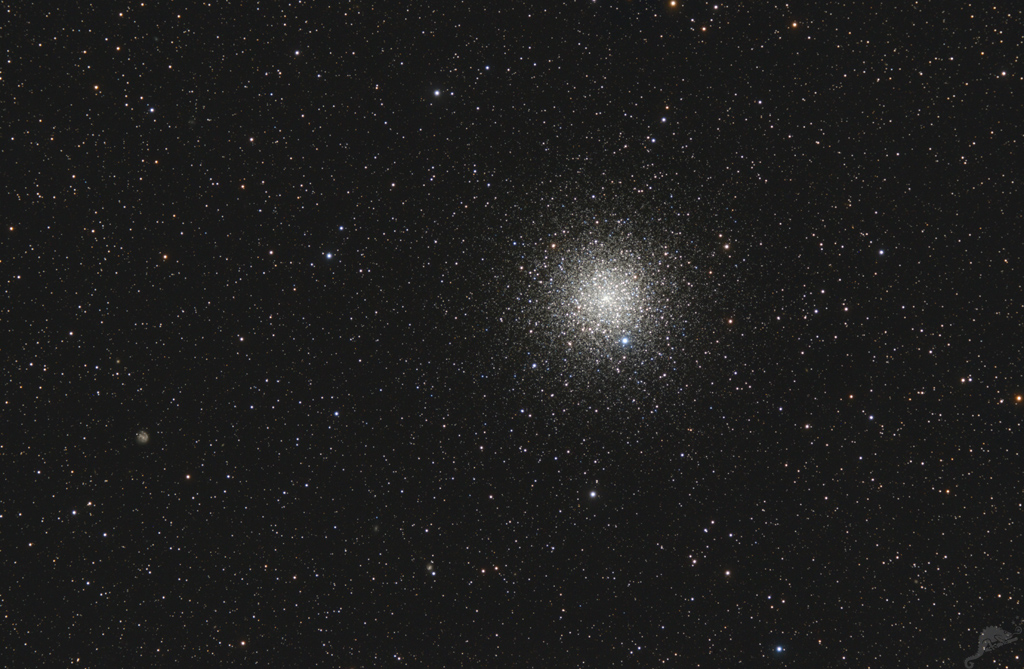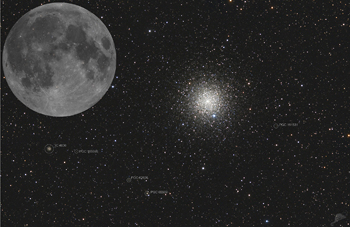 |
CHAMÄLEON + ONJALA OBSERVATORY DeepSky | SITEMAP HOME CHAMÄLEON |
|
 |
|||
| « back to overview Cluster | Load
higher resolution (1800 x 1200 Pixel 3500 x 2300 Pixel) |
Object description |

NGC 6752 is a strangely rarely shown, magnificent globular cluster in the constellation Peacock, which is an amazing sight in the telescope. Strange because NGC 6752 is the third brightest globular cluster in Earth's night sky after Omega Centauri and 47 Tucanae. It contains well over 100 000 stars, the brightest of 11th magnitude. With a distance of about 13 000 light years to the solar system and an apparent size of 25 arc minutes it has a true diameter of about 100 light years. According to Shapley it is assigned to concentration class VI, its total mass is estimated to be about 160 000 solar masses.
Scientific studies have shown that a remarkable number of the stars in the central region are binary and multiple star systems. In addition, the cluster contains a large number of "blue strangler" stars, which seem to be too young and massive to exist in such an old cluster. These "blue stragglers" are thought to have been formed by collisions and mergers of stars. Not surprising given the enormous stellar density in the core region of the globular cluster.
And NGC 6752 holds yet another record: with an age of its stars of nearly 13.8 billion years, it is almost as old as the universe itself. In 2019, observations of NGC 6752 with the Hubble Telescope, revealed a concentration of very faint stars. It is a previously unknown galaxy, just 3000 light-years across, which the discoverer classified as a spheroidal dwarf galaxy. It was named Bedin 1 after its discoverer, and an image of it can be seen here..
 |
Our
image shows some more faint galaxies, among them IC 4836, which are all several
hundred million light-years away from Earth. The bright blue star in the
cluster is a foreground star - HD 177 999 - of the 7th magnitude. IC 4836 is
classified as a barred spiral - twice the size of our Milky Way - at a distance
of nearly 200 million light-years. NGC 6752 was discovered on June 30, 1826 by Scottish astronomer James Dunlop, who was working in Australia. In comparison to NGC 6752 we show images of Omega Centauri (NGC 5139) here and of 47 Tucanae (NGC 104) here. « click here or the thumbnail to load a large annoted image and a size comparison to the full moon. |
 |
 |
 |
 |
 |
 |
 |
| Sun | Moon | Solar System | DeepSky | Widefield | Miscellaneous | Spec. Projects |